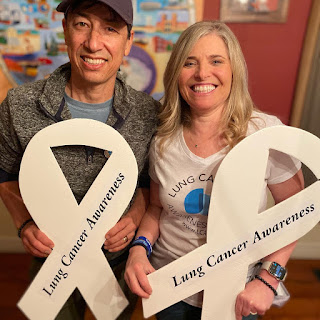A Leader in Innovation
Let me tell you about one of the most passionate, committed
cancer researchers I have ever met. I actually first met Johnathan Whetstine on
Twitter, in January of 2016. He started following me and I started following
him because we seemed to share and like similar content and points of view on
Twitter. The common theme was the need to support basic cancer research. At the
time I was working for the National Foundation for Cancer Research and my role
was to raise money to support cancer research laboratories like Johnathan’s.
After a series of exchanges during the spring on Twitter, he asked me if I was
going to the Partners
Healthcare World Medical Innovation Forum in Boston. I told him I was, and
we planned to meet there. What I didn’t know until I got there, was that
Johnathan was actually one of the presenters! Turns out he was to be onstage
when they revealed the “Disruptive
Dozen.” The Disruptive Dozen was created to identify and rank the most
disruptive technologies that Partners
Healthcare’s leading faculty feel will break through over the next decade
in cancer care. Wow! His work in epigenetics was one of the
promising technologies, and Johnathan’s lab was leading the way. I had no idea
that I had met one of the most accomplished researchers in the cancer research
community!
PASSION FOR SCIENCE
Johnathan and I became fast friends because he shared my
passion for research, and he was bursting with excitement about his work. He
told me he knew he wanted to become a scientist when he was 14 years old
because he was inspired by a science teacher who made science fun and
interesting. Growing up in rural Kentucky and Tennessee he had huge ambitions
and decided in high school that he wanted to find a cure for cancer. And he
ended up as a post-doctoral fellow in the lab of Dr. Yang Shi at Harvard
Medical School before getting his own lab. He’s a Ph.D. so he doesn’t treat
patients, but he hopes his work will provide insights into the development of
better molecular diagnostics, epigenetic therapeutic molecules, or novel therapeutic
combinations so better efficacy can be achieved in treating cancer. Research
like Johnathan’s also are the foundation in the research continuum: basic
research discoveries need to take place to technologies into development, and
lead to clinical trials. This is the first step in getting a new drug or
technology from bench to bedside.
FUNDRAISING IS A REALITY
According to Johnathan, he spends up to 75% of his time on
fundraising for his lab. This includes writing NIH grants and grants to the
American Cancer Society, American Lung Association and foundations. He has
built some strong relationships with these organizations. He also has connected
with many patients through this process, attending events and inviting
interested parties to his lab. However, it seems to me he should be spending
75% of his time in the lab – imagine how much more impact he could have on
advancing research if he didn’t have to spend so much time on paperwork? He
would love to add more postdocs to his lab to do additional experiments based
on his theories, but he has to balance that with his sources of funding. He is
responsible for funding his lab. It’s like running a small business because he
has to make decisions on growth and staffing based on the revenue coming in. He
laments how challenging and how many years it takes to get an NIH R01 grant, the largest
grants. The average
age of first-time R01 funded investigators who have Ph.D. is 42 and the average
grant is $499,221. Are we missing out on research discoveries from younger
scientists because of a lack of funding? Scientists like Johnathan love to have
people visit his lab so he can share his work and hopefully inspire people
support him, but the unfortunate reality is that this takes up a tremendous
amount of his time.
